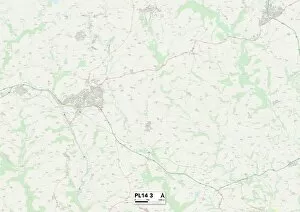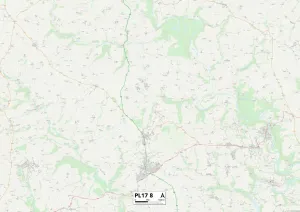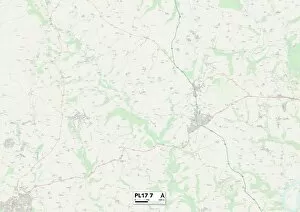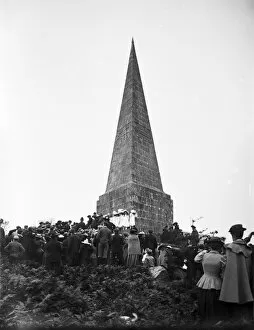Callington Collection
Callington is a small town located in Cornwall
Choose a picture from our Callington Collection for your Wall Art and Photo Gifts
15 items
All Professionally Made to Order for Quick Shipping
-
Callington Collection
Callington is a small town located in Cornwall, England and is situated on the River Lynher and lies within the Tamar Valley Area of Outstanding Natural Beauty. The town has a population of around 6,000 people and is known for its traditional Cornish architecture, as well as its local festivals and events, and is home to several historic sites such as Kit Hill Country Park, which offers stunning views of the surrounding countryside. It also boasts a variety of shops, pubs and restaurants for visitors to enjoy. The area has become increasingly popular with tourists due to its proximity to Dartmoor National Park and Bodmin Moor. With plenty of activities on offer from walking trails to fishing spots, Callington provides an ideal destination for those looking for an escape from city life.
+
Our beautiful pictures are available as Framed Prints, Photos, Wall Art and Photo Gifts
The Callington collection from Media Storehouse showcases the beauty of Cornwall, England through a variety of wall art options. Our collection includes framed prints, photo prints, canvas prints, jigsaw puzzles and greeting cards that feature stunning images of the town and its surrounding areas. From picturesque landscapes to charming architecture, each piece captures the essence of this historic location in Europe. Whether you are looking to add some character to your home or office space or simply want a unique gift for someone special, the Callington collection offers something for everyone. Each item is carefully crafted using high-quality materials to ensure that it lasts for years to come. With so many different options available, it's easy to find something that suits your personal style and taste. Whether you prefer bold colors or more muted tones, there is sure to be a piece in our collection that catches your eye. So why not bring a touch of Cornwall into your life with one of these beautiful pieces from Media Storehouse?
+
What are Callington (Cornwall England United Kingdom Europe) art prints?
Callington art prints are a collection of artistic representations of the town of Callington, located in Cornwall, England. These prints showcase the beauty and charm of this historic town through various mediums such as photography, painting, and illustration. The artwork captures the unique architecture, landscapes, and culture that make Callington a special place to visit or live in. These art prints are produced by Media Storehouse which offers a wide range of high-quality images from around the world. They can be purchased online for personal use or as gifts for friends and family who have an interest in Cornwall or appreciate fine art. The prints come in different sizes and formats including canvas, framed paper print or unframed paper print allowing customers to choose what best suits their needs. Callington art prints offer a beautiful representation of this charming Cornish town that will add character to any home decor while also serving as a reminder of fond memories spent there.
+
What Callington (Cornwall England United Kingdom Europe) art prints can I buy from Media Storehouse?
We offer a wide range of Callington art prints that capture the beauty and charm of this picturesque town in Cornwall, England. From stunning landscape photographs to vibrant paintings, there is something for everyone's taste and style. You can choose from a variety of mediums such as canvas, framed prints or posters to suit your budget and preference. Some popular themes include the historic buildings and architecture of Callington, its natural surroundings including rivers, forests and hillsides; as well as local events such as festivals and markets. The artwork available on Media Storehouse showcases the unique character of Callington through various artistic styles ranging from traditional to contemporary. Whether you are looking for a beautiful piece to decorate your home or office space or want to gift someone special with a memorable souvenir from their visit to Callington, we have an extensive collection that will surely meet your needs.
+
How do I buy Callington (Cornwall England United Kingdom Europe) art prints?
To purchase Callington art prints from Media Storehouse, you can browse our extensive collection of artwork online. Simply search for "Callington" in the search bar on our website to view all available prints. Once you have found a print that you like, click on it to see more details and options for sizing and framing. To buy the print, select your desired size and frame (if applicable) and add it to your cart. You will then be prompted to enter your shipping information and payment details. After completing your purchase, Media Storehouse will process your order and ship the print directly to you. We offer a wide range of high-quality art prints featuring stunning images from around the world. With our easy-to-use website and secure checkout process, buying Callington art prints has never been easier or more convenient.
+
How much do Callington (Cornwall England United Kingdom Europe) art prints cost?
We offer a wide range of Callington art prints that vary in price depending on the size and type of print. Our collection includes high-quality photographic prints, canvas prints, framed prints, and even posters. We work with top photographers and artists to provide our customers with stunning images that capture the beauty of Callington and its surroundings. Our prices are competitive and affordable for all budgets. We believe that everyone should have access to beautiful artwork without breaking the bank. Whether you're looking for a small print to hang in your home or a large canvas to make a statement in your office space, we have something for everyone. We take pride in providing excellent customer service and ensuring that our products meet our customers' expectations. Our team is always available to answer any questions you may have about our products or services. So why not browse through our collection today and find the perfect Callington art print for you.
+
How will my Callington (Cornwall England United Kingdom Europe) art prints be delivered to me?
We take great care in ensuring that your Callington art prints are delivered to you safely and securely. We use high-quality packaging materials to protect your artwork during transit, including sturdy cardboard tubes for rolled prints and flat-pack boxes for framed or mounted prints. Our delivery partners are trusted couriers who have years of experience in handling delicate items like art prints. They will ensure that your package is delivered to you on time and in perfect condition. Once your order has been dispatched, you will receive a tracking number so that you can keep an eye on its progress. If there are any issues with the delivery, our customer service team will be happy to assist you. We want you to enjoy your Callington art print as soon as possible, which is why we aim to dispatch all orders within 2-3 working days of receiving them.















